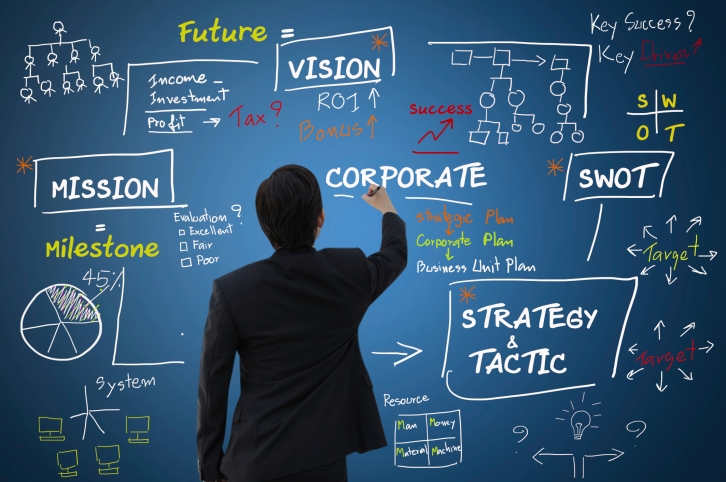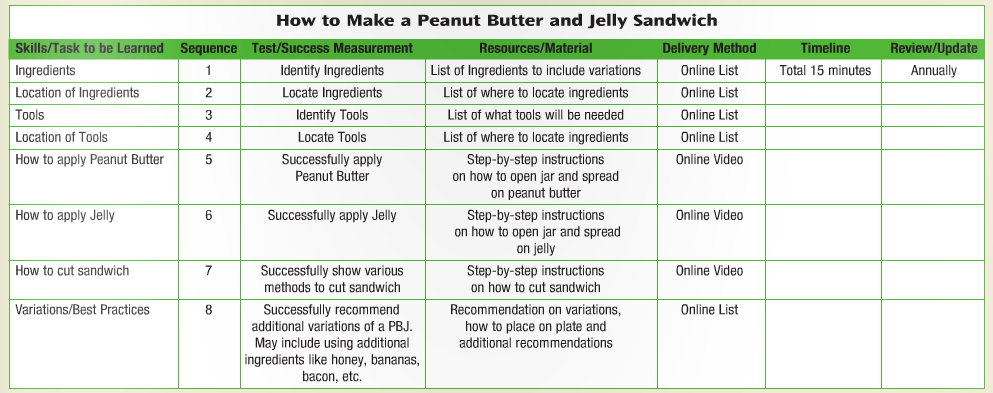Creating a Training Strategy for the Next Generation

“Always pass on what you have learned.”—Yoda
One of the greatest emerging challenges businesses face today is a workforce who is not only retiring, but as they retire or change positions, they are retiring their knowledge for an incoming workforce.
According to the Bureau of Labor and Statistics, the average age for an employee in the U.S.A. in 2013 was over the age of 42.
The risk of “Lost Knowledge” is very real for many companies today. We must recognize two major forces in play. The first is an aging population and the second is the increasing complexity of knowledge, skills, rules and regulations that companies must capture and share with the incoming workforce. The Millennial or Generation Y population is bigger and much more diverse than the Boomers. There are currently 80 million Millennials in the United States, and every day another 10,000 of them turn 21. By the year 2025, three out of every four workers globally will be Generation Y. We must create a path to train and mentor the next generation. The challenge however lies in create training programs that are engaging and relevant to the methods that Millennials learn and excel in.
Baby Boomers have decades worth of wisdom and Millennials possess the tech-savvy skills that today's workforce requires. Yet many businesses are not adapting and catering to the communication styles, effective learning methods and overall purpose-driven ventures that the Millennial workforce desires to be a part of. As a result, many companies are seeing an extreme amount of turnover. The use of gamification (which means applying game principles to non-game situations), is very appealing to the Millennial workforce. The concept is to make learning fun, and to challenge the learner to continue to learn through quests and competition. More and more organizations are utilizing gamification programs for corporate e-learning and training.
Subject matter experts or “SMEs” are often plagued by the question of how to take several years of experience and put it into a context so that they can start at the right place and share their knowledge and expertise in an orderly, make-sense fashion. For most experts, just the idea of explaining how they have been doing something for years to someone who is just getting started is overwhelming. For many, work has become a habit or an instinct and the thought of “how to do it” is second nature. Many SMEs just dive in somewhere and start explaining their work, hoping for the best. This scattered approach leaves the training unpredictable and the results the same. There is a better way. In order to have a successful outcome for your training program, you must have a successful plan. The better the plan, the better the results. This does not mean you need to invest in an outside training organization or hire an internal trainer to develop your training program. What it does mean is that by creating and following a plan, you will be able to easily develop your training programs and engage both your SMEs and your apprentices (new employees) in the learning experience.
We live in a rapidly changing environment. Systems, regulations and processes can change quickly. This means companies must have a training plan that is easily changed or adapted as changes come into play. You must begin by creating a training plan that can be added to, deleted or completing rewritten and delivered quickly. You will want to look for a delivery method that is scalable, engaging, and easily managed. There are many recent advancements in technology that will allow companies to adopt an online e-learning platform that can house the training that their SMEs develop. Remember to make certain that the platform allows SMEs to develop and create their training programs online in real time so that they can access it as they need to for changes. It should also have various teaching methods that allow for engagement and interactivity as well as a strong testing and measurement method. Reporting is another feature that is important to consider if you have certification or government regulatory or licensing requirements within your industry.
A complicated or expensive e-learning platform or training program is not necessary to accomplish transferring a tenured employee’s expertise. However; creating a training plan template is the most important aspect of any effective training program. The training plan is the most important tool you can use to help your SMEs take their expertise and transfer it into a logical training program to quickly help your new employees learn a new task or skill. By using a systematic approach, an SME can quickly develop training for almost any task for skill. Begin by using the following template to develop a training plan.
►Step one: Start with a Training Template Spreadsheet
►Step two: Identify the skills or tasks that are to be learned.
►Step three: Prioritize the order or sequence in which the apprentice is to learn the skills or tasks.
►Step four: Write the success metrics and/or test questions that must be answered to prove that the apprentice has “learned” the skills or tasks.
►Step five: Locate resources and develop material or instructions on how the apprentice will learn the skills or tasks.
►Step six: Determine what delivery method will be used for the training. It may be a combination of face-to-face interaction supported by online follow up and testing.
►Step seven: Establish a timeline. How long will it take them to learn and master the skills or tasks?
►Step eight: Review/Update material and measure effectiveness of training plan.
Below is an illustration of how to use the Training Plan Template to teach how to make a peanut butter and jelly sandwich.

Once the training plan template is complete, an SME can begin creating or locating the resources to teach the skill or task. When designing an effective training program, course developers often will use what is termed as “chunking” to break up the online learning experience and make it more engaging and interactive. Videos that show how to spread the peanut butter and jelly onto the bread and then view bread-slicing options may be another way to deliver the content in a visual context to help the learner see what they need to do to complete the task. Remember, Millennials learn best by seeing and doing and they like to have the lessons short and move quickly. Tests can be incorporated into an online e-learning platform to then check for understanding.
It is necessary for companies today to adapt or introduce training that will resonate with the incoming generation while sharing the expertise and knowledge of the existing generation. Companies must form bonds between the generations.
In order to train and retain the next generation, companies must embrace a formal approach to the problem. The goal is to harness these differences in generations and turn them into company strengths.
In the end, all generations play a crucial role in business. Now is the time to pass on what we have learned.

Ginger Bell is the best-selling author of Cracking the Success Code and Success Today, books she co-authored with Brian Tracy and other business specialists. She is currently involved in leading development of a gamification e-learning system with Morf Media Inc., an international gamification software development company. She may be reached by e-mail at [email protected].
This article originally appeared in the September 2015 print edition of National Mortgage Professional Magazine.





